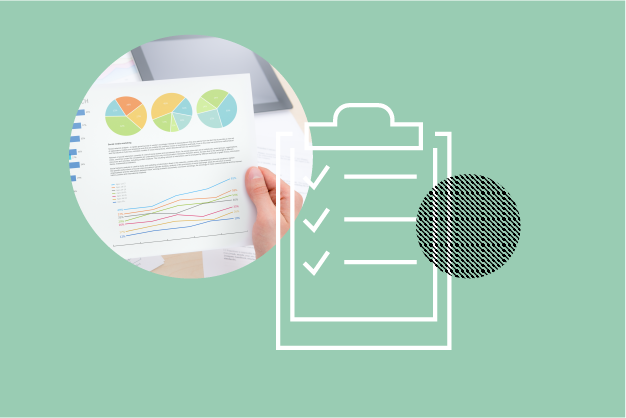
Kevin and Lori are both in their early 60s. Lori is an elementary-school teacher with a defined-benefit pension plus about $100,000 in an RRSP. Kevin works in the oil industry and has roughly $750,000 in his RRSP – and no pension. Both Kevin and Lori have maxed out their TFSAs annually and have about $80,000 each, for a total household portfolio of just over $1,000,000.
As all assets are registered and there are no tax consequences to overhaul the portfolio, Kevin and Lori are “open to anything” to get their portfolio back on track and better position them for retirement, with two constraints. First, here’s some background.
Their Equity Journey – From Dynamite to Dud
For the last 20 years, Kevin has been managing the family’s investments, mostly picking individual stocks with the help of a stockbroker. Earlier in his investing career, Kevin saw great returns by investing in mining companies, oil and gas companies (30% of their current portfolio), banks, and other Canadian companies. Around 15% of the portfolio is allocated to U.S. value funds his broker recommended more than a decade ago, which were award-winning funds then but have fallen flat since.
Over the past decade Kevin has gotten increasingly frustrated with his broker, who's been providing fewer and fewer recommendations. In the past few years, Kevin has asked his broker to recommend dividend-paying stocks – pipelines, utilities, telecommunications companies, and the big Canadian banks. The few stocks the stockbroker recommends are often duds.
Since the financial crisis, Kevin and Lori have seen only single-digit portfolio growth, all while watching major stock indices compound at double-digit rates. For Kevin, 2020 was the last straw as the household’s portfolio returned an overall loss of 10% percent although the S&P 500 returned 14.2% in Canadian dollar terms, the Morningstar Canada index returned 4.9%, and the TSX Composite returned 5.6%.
Which leads to the two constraints. Because of their bad experience with mutual funds, Kevin and Lori are not interested in more mutual funds. They’re also wary of any high-tech stocks or anything outside North America.
Enter, The Advisor
The couple approached Markus Muhs, Investment Advisor & Portfolio Manager with Muhs Wealth Partners in Edmonton, part of Canaccord Genuity Wealth Management.
At the outset, he saw some problems. "It’s obvious why Kevin and Lori’s portfolio has underperformed. They’ve remained heavily invested in Canada, which has underperformed generally as a region, and in energy stocks, which have significantly disappointed as a sector,” he explains. Looking a little bit deeper, Muhs identifies Kevin’s bias towards dividend-payers as another source of underperformance, pointing out that “Even in Canada, his allocation avoided most of the recent growth drivers – like Shopify – in favor of stocks that have been languishing.”
What to Do?
Muhs recommends an overall shift to a more globally diversified, evidence-based index portfolio, and accepting of the evidence that over time, most active stock selection is unable to beat stock indices.
He points out an error a lot of frustrated investors make, which is to undertake a reactionary overhaul of the entire portfolio – like dumping everything and buying a single NASDAQ-tracking ETF. “With that approach, what if you’re just buying one of the most overvalued asset classes?"
“We all know which stocks generated most of the return in the past,” Muhs notes. “But we have no idea which stocks will lead the way in the future. The only way we can be assured of owning the next big growers is by owning all stocks, of all sizes, in all markets.”
Finding a Compromise
Kevin is a bit reluctant to dump all of his and Lori’s holdings, but he accepts a compromise: in each of the areas where he’s over-concentrated – energy, financials, mining stocks and utilities – he drops a few of his least-favorite names.
The proceeds are then reallocated into a global all-market ETF. As this ETF is about 55% U.S., this also means dropping Kevin’s high-cost U.S. mutual funds.
The Big Reveal
In total, after the changes the equity portion of Kevin and Lori’s portfolio is equally split between the global ETF and their remaining stocks. By dumping their high-cost U.S. mutual funds, it’s also less costly to manage. Finally, by reducing the total number of holdings, the portfolio is simpler and will be easier to manage over time.
Using the Morningstar Portfolio X-Ray tool to compare their portfolio before and after the changes, here’s the impact:
|
Asset Allocation (%) |
Before changes |
After changes |
Change (+/–) |
|
Cash |
0.2 |
0.0 |
–0.2 |
|
Canadian Equity |
82.1 |
51.4 |
–30.7 |
|
U.S. Equity |
17.2 |
27.9 |
+10.7 |
|
International Equity |
0.4 |
20.7 |
+20.3 |
|
Fixed Income |
0.0 |
0.0 |
0.0 |
|
Average MER / Annual Cost |
2.13% / $3,522.01 |
0.08% / $404.32 |
–2.05% / -$3,117.69 |
|
Number of Holdings |
31 |
18 |
–13 |
|
Portfolio Standard Deviation |
12.52 |
9.79 |
–2.73 |
What Kevin and Lori have now is a portfolio that’s less risky and much closer to the efficient frontier. The efficient frontier was formulated by Nobel-laureate Harry Markowitz, and says that a portfolio is efficient if it generates the best possible return for the level of risk that it assumes.
“Another consideration, for Kevin and Lori and most retirees,” Muhs says, “is that Kevin won’t be around forever. Longevity projections tell us that there will likely be a time when Kevin has passed and Lori, (either alone or with a new advisor, is left to manage the portfolio. Simplifying a portfolio is another way to reposition it for retirement readiness.”



















